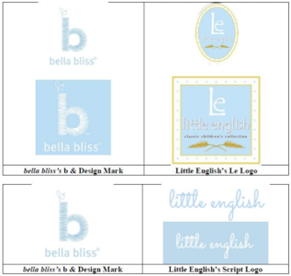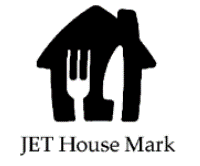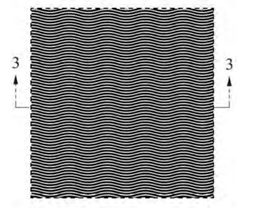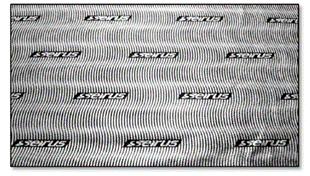After a de novo review, the US Court of Appeals for the Sixth Circuit affirmed in part and reversed in part a district court’s motion to dismiss, finding the competing marks sufficiently similar to avoid dismissal, and the attorneys’ fee award. Bliss Collection, LLC v. Latham Companies, LLC, Case Nos. 21-5723; -5361 (6th Cir. Sept 21, 2023) (Mathis, Bush, JJ.) (Larsen, J., dissenting).
This case between Bliss and Latham was the latest installment in a series of cases between the children’s clothing companies after a Bliss founder left to start Latham as a competitor company. Here, Bliss sued Latham for infringement of three trademarks for Bliss’s stylized lowercase “b” logo, appearing as if stitched out in thread. Bliss sued for federal copyright infringement, federal trademark infringement, federal trade dress infringement, federal false designation of origin and misappropriation of source, federal unfair competition, trademark under Kentucky law and unfair competition under Kentucky law.
The competing marks are depicted below:

Latham moved to dismiss, and the district court dismissed the federal copyright and trade dress claims. The district court did not initially dismiss the remaining claims, but later did so after a motion for reconsideration. The district court determined that Latham was not entitled to attorneys’ fees because the case was not exceptional, and Bliss had brought the suit in good faith. Bliss appealed the federal trademark infringement, federal trade dress infringement and trademark infringement under Kentucky common law only.
The Sixth Circuit focused its analysis on whether the amended complaint properly alleged that Latham’s logo was a use of Bliss’s trademark. The Court noted that dismissal was not warranted for anything but the most extreme cases, concluded that this was not such a case and reversed.
The Sixth Circuit found that Latham used the accused mark “in a trademark way” (i.e., to identify goods). Then, weighing the Frisch factors to determine likelihood of confusion between the marks, the Court found that the similarity between the marks and their “impression” favored Bliss despite the fact “that the logos share no words or homophones.” Overall, the Court found that five of the eight factors favored Bliss and that two were neutral. Only the likelihood of purchaser care factor was found to favor Latham. The Court thus found that Bliss had plausibly alleged a likelihood of confusion and that its complaint stated a federal trademark infringement claim. Applying the same logic to the state trademark claims, the Court also reversed the dismissal of those claims.
The Sixth Circuit affirmed the dismissal of the trade dress claim, however, because Bliss failed in its affirmative duty to plead facts in support of nonfunctional trade dress.
Turning to the attorneys’ fee award, the Sixth Circuit found that the mere fact that Bliss sued Latham was not sufficient to warrant an “exceptional” case finding in terms of an award for fees. The Court was also unpersuaded that the trade dress claim was worthy of a fee award [...]
Continue Reading
read more

 Subscribe
Subscribe








